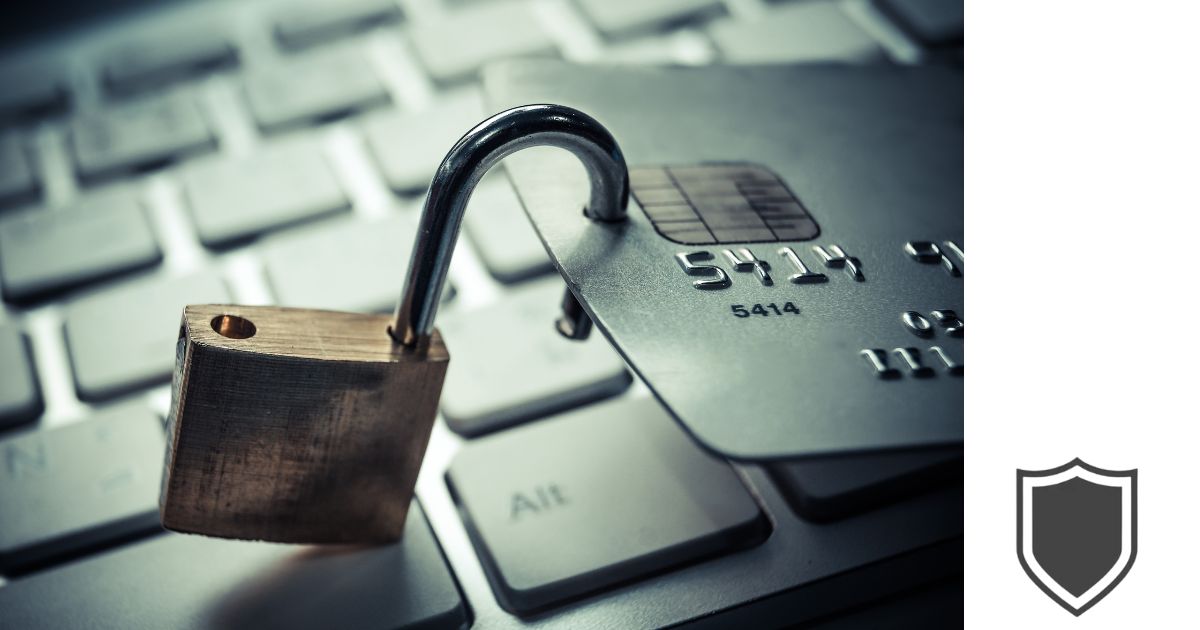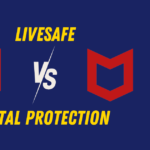In the wide-reaching scope of the digital world, the task of protecting personal data remains unending. Encryption and decryption are the main techniques used in this continuous battle.
They are like two sides of a coin, each indispensable to the other, ensuring that your online communications remain private and secure. But what do these terms actually mean? And more importantly, how do they affect your daily life on the internet?
In this comprehensive guide, we’ll decode the concepts of decryption vs encryption, exploring what they mean for your online privacy. So sit back, grab a cup of coffee, and let’s get into this fascinating aspect of the cybersecurity world.
Table of Contents
Encryption Basics
Definition of Encryption
Encryption is the process of converting plain text into a coded message (ciphertext) that can only be deciphered by authorized parties. Its purpose is to protect sensitive information from unauthorized access or interception.
Encryption algorithms use complex mathematical functions to scramble the original message, making it unreadable to anyone who does not have the corresponding decryption key.
Types of Encryption
There are two main types of encryption systems: symmetric encryption and asymmetric encryption. Let’s look at each one.
Symmetric Encryption
Symmetric encryption, also known as shared secret encryption, uses a single password or key to encrypt and decrypt data. This means that the same key is used for both encryption and decryption.
The key is shared between the sender and receiver of the message, and it must be kept secret to maintain the security of the message.
Asymmetric Encryption
Asymmetric encryption, also known as public key encryption, uses two keys for encryption and decryption. One key is public and can be shared with anyone, while the other key is private and must be kept secret.
The public key is used to encrypt the message, and the private key is used to decrypt the message.
This system is more secure than symmetric encryption because the private key is never shared.
Importance of Encryption
Encryption is important because it provides a secure way to transmit sensitive information over the internet or other networks. It protects personal information, financial data, and other sensitive information from hackers and other unauthorized parties.
Without encryption, sensitive information is vulnerable to interception and theft. Encryption also protects data stored on computers and other devices, such as smartphones and tablets. By using encryption, you can ensure that your data remains secure and confidential.
Decryption Basics
Definition of Decryption
Decryption is the process of transforming encrypted data from ciphertext back into plaintext. It’s the reverse operation of encryption, where the original data is converted into an unreadable format via an encryption algorithm.
Decryption requires the secret key or password used during encryption to restore the transmitted data to its original form.
Decryption Process
The decryption process involves the following steps:
- Retrieval of the encrypted data (ciphertext)
- Identification of the encryption algorithm used
- Retrieval of the secret key or password
- Application of the secret key or password to the ciphertext
- Conversion of the ciphertext into plaintext
Importance of Decryption
Decryption is essential for protecting sensitive information from unauthorized access. As the key to opening encrypted data, decryption ensures that only authorized individuals with the correct credentials can access and use such data.
Decryption ensures that the data received is the same as the data sent, providing assurance that the data has not been tampered with during transmission.
By understanding the decryption process and its importance, you can take steps to secure your data and prevent unauthorized access.

Difference Between Encryption and Decryption
The main difference between decryption vs encryption is the direction of the transformation.
Although we just touched on this point, it’s important to hit it home. Encryption is the process of converting plaintext into ciphertext, whereas decryption is the process of converting ciphertext into plaintext.
In other words, encryption is the process of hiding the original message, whereas decryption is the process of revealing the original message.
So when it comes to decryption vs. encryption, as we said at the beginning here, they’re really two sides of the same coin. Both are used to protect data from unauthorized access and to ensure its confidentiality.
Use Cases of Encryption and Decryption
Data Security
Encryption is widely used to protect confidential data from unauthorized access.
For example, you can encrypt sensitive financial information, such as credit card numbers, social security numbers, and bank account details, to prevent hackers from stealing it.
Decryption, on the other hand, is used to access encrypted data. If you have the right decryption key, you can unlock the encrypted data and read it. For example, you can decrypt a password-protected document to view its contents.
Communications
Encryption is also used to secure communications between parties. By encrypting messages, you can ensure that only the intended recipient can read them.
This is particularly important for sensitive communications, such as those between government agencies, financial institutions, and healthcare providers.
Decryption is used to access encrypted communications. If you have the right decryption key, you can decrypt the message and read it. For example, you can decrypt an email that was sent to you using PGP encryption.
Digital Signatures
Encryption is used to create digital signatures, which are used to verify the authenticity of digital documents. By encrypting a document with your private key, you can create a digital signature that can be verified with your public key.
This ensures that the document was not tampered with and that it was indeed signed by you.
Decryption is used to verify digital signatures. If you have the public key of the signer, you can decrypt the digital signature and verify that it was indeed signed by the private key of the signer.
Encryption and decryption are essential tools for securing data, communications, and digital signatures. They ensure that your confidential information is protected from unauthorized access and that your digital documents are authentic and tamper-proof.

Challenges and Solutions
When it comes to encryption and decryption, there are several challenges organizations face. In this section, we’ll explore some of the most common challenges, and potential solutions to overcome them as well.
Key Management
One of the biggest challenges with encryption is key management. Encryption keys are used to encrypt and decrypt data, and if these keys are lost or stolen, it can result in a data breach. Organizations need to ensure that their encryption keys are properly managed and protected.
One solution to this challenge is to use a key management system. A key management system helps organizations securely generate, store, and distribute encryption keys. It also provides access controls and audit trails to ensure only authorized users have access to the keys.
Cryptanalysis
Cryptanalysis is the study of analyzing and breaking encryption systems. Attackers can use cryptanalysis techniques to try and break encryption systems, gaining access to sensitive data. This is a significant challenge for any organization relying on encryption to protect data.
A potential solution here is to use one of the strongest encryption algorithms. Strong encryption algorithms are designed to be resistant to cryptanalysis techniques and can help protect data from attackers. Organizations should also regularly review and update their encryption algorithms to ensure they are using the most secure options available.
Quantum Computing Threat
Quantum computing is a new technology that has the potential to break many of the encryption systems currently in use. This is yet another significant challenge for organizations relying on encryption to protect their data.
The likely solution to this challenge is to start planning for the future right now. Organizations should begin to explore and invest in post-quantum cryptography. Post-quantum cryptography is designed to be resistant to attacks from quantum computers and can help protect data in the new quantum normal.
Future of Decryption vs Encryption
Speaking of that future, let’s take a peek at what it will probably look like. As technology advances, encryption and decryption techniques are becoming more sophisticated to keep up with the ever-evolving threats to data security.
Here are some trends that may shape the future of encryption and decryption…
Quantum Encryption
As we noted briefly above, quantum encryption is a new technique that uses the principles of quantum mechanics to provide a higher level of security versus traditional encryption methods.
It’s based on the fact that measuring a quantum system disturbs it, so any attempt to eavesdrop on a quantum-encrypted message would be detectable. The National Security Agency (NSA) is currently preparing post-quantum encryption standards for the future.
Homomorphic Encryption
Homomorphic encryption is a technique that allows computations to be performed on encrypted data without first decrypting it. This means that sensitive data can be processed without ever being exposed, which could be particularly useful in applications such as cloud computing. However, homomorphic encryption is still in the experimental stage and is not yet widely used.
Blockchain Encryption
Blockchain technology is already being used for secure transactions, but it could also be used for secure data storage. By using blockchain encryption, data can be stored in a decentralized, tamper-proof manner. This would make it much more difficult for hackers to access or modify the data.
Conclusion
As we journey through the complex landscape of the internet, the twin concepts of encryption and decryption serve as critical companions, protecting our data and preserving our privacy.
Understanding ‘Decryption vs Encryption’ isn’t just about decoding cyber jargon – it’s about empowering yourself to better navigate the digital world, armed with the knowledge and awareness to move forward safely.
At PrivacyDefend.com, we believe that a more secure digital life begins with understanding, and we’re here to help illuminate the path. I hope you’ll continue to explore with us as we go deeper into the strategies and technologies that protect your online privacy.
Decryption vs Encryption FAQs
Which encryption cannot be decrypted?
All forms of encryption are designed to be decrypted, but ‘one-way’ encryption, also known as hashing, is practically impossible to reverse without the original input.
Hashing algorithms transform data into a fixed-size string of characters, which is extremely difficult (nearly impossible with current technology) to reverse-engineer back into the original data.
What is an example of encryption and decryption?
A simple example of encryption and decryption is a messaging app like Signal. When you send a message, the app uses a specific encryption key to scramble your text (encryption).
This makes the message unreadable to anyone intercepting it in transit. When your message reaches its intended recipient, their app uses a decryption key to translate the scrambled text back into the original message (decryption).
Is decryption the opposite of encryption?
Yes, decryption is essentially the opposite process of encryption. While encryption scrambles data into a cipher or code to prevent unauthorized access, decryption is the process of converting that cipher back into its original form, making it understandable again.
Can hackers decrypt encrypted data?
In theory, any form of encryption can be broken with enough computational power and time. However, with robust modern encryption methods, breaking the encryption or ‘cracking’ the code can take many years, even with the most powerful computers.
If a hacker does manage to get hold of an encryption key through other means, like social engineering or malware, they can potentially decrypt the data more easily, however.
- Decryption vs Encryption: What They Mean for Your Online Privacy - April 2, 2025
- Best VPN for Linux: Top Choices for Maximum Security and Privacy - April 2, 2025
- Mcafee Livesafe vs Total Protection: Which One to Choose? - April 2, 2025











7 thoughts on “Decryption vs Encryption: What They Mean for Your Online Privacy”